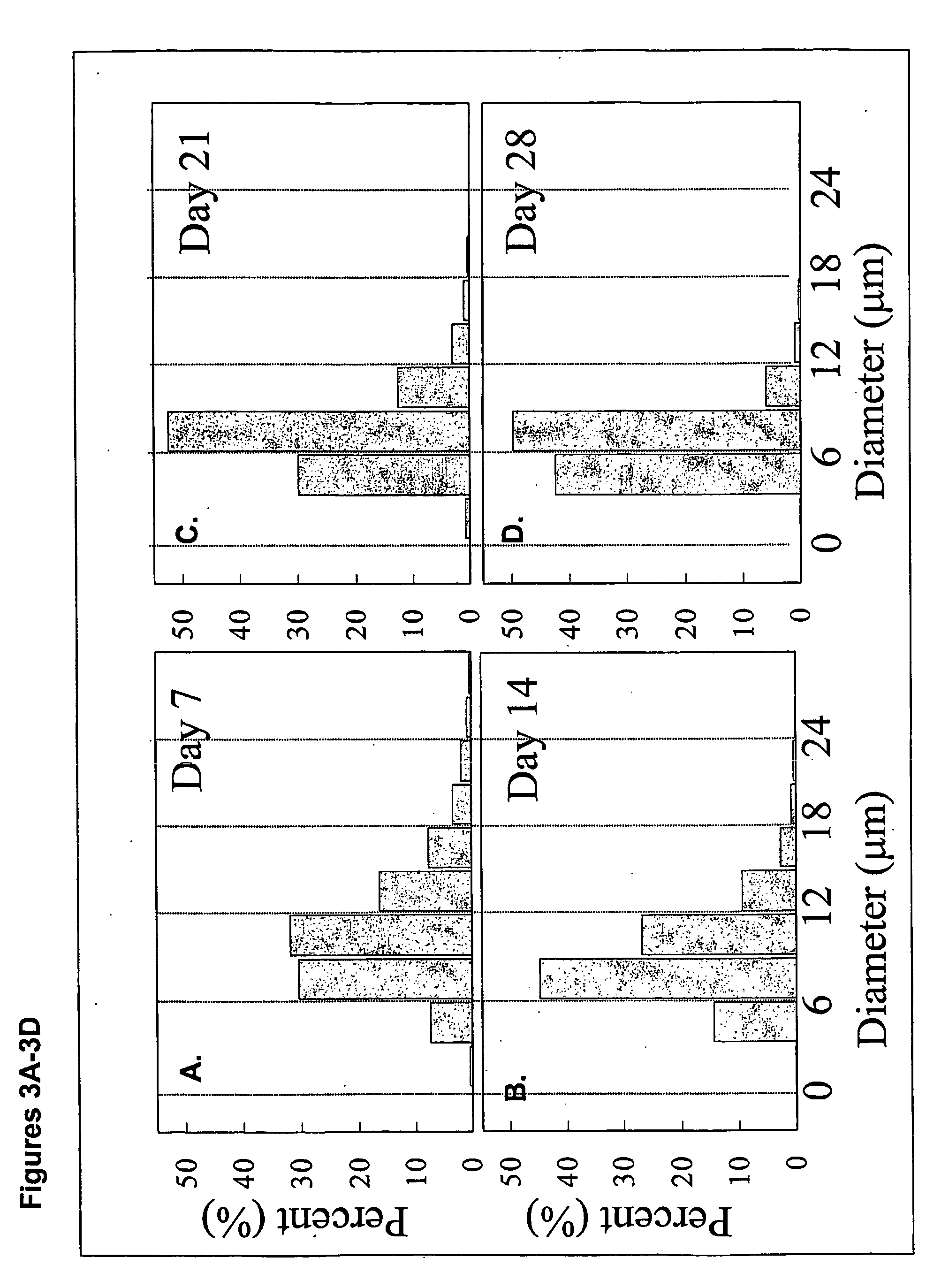[0009] In preferred embodiments of any of the above aspects, the tissue or organ may be
in vivo or
ex vivo. In various preferred embodiments, the tissue or organ is selected from the group consisting of bladder, brain,
nervous tissue, glia,
esophagus,
fallopian tube, heart,
pancreas, intestines,
gall bladder,
kidney, liver,
lung, ovaries,
prostate,
spinal cord,
spleen,
stomach, testes, thymus,
thyroid, trachea, urogenital tract,
ureter,
urethra,
uterus, breast,
skeletal muscle,
skin, bone, and
cartilage. In other preferred embodiments, the administered cells are from the same
mammal. In other embodiments, the tissue or organ is from a different
mammal than the administered cells. Preferably, the method further includes administering the tissue or organ to a recipient mammal. The tissue or organ may be from a donor of the same species as the recipient or from a different species (e.g., pig or
primate). Preferably, the administration of cells increases the biological function of a diseased or damaged tissue or organ by at least 5%, 10%, 25%, 50%, 75%, 100%, 200%, or even by as much as 300%, 400%, or 500%.
[0011] In other preferred embodiments, the method increases the number of cells of the tissue or organ by at least 5%, 10%, 20%, more desirably by at least 25%, 30%, 35%, 40%, 50%, 60%, or even by as much as 70%, 80%, 90 or 100% compared to a corresponding tissue or organ. In preferred embodiments, the method increases the
biological activity of the tissue or organ by at least 5%, 10%, 20%, 30%, 40%, 50%, 60%, 70%, 80%, 90%, 100%, 150%, or even by as much as 200%, 300%, 400%, or 500% compared to a corresponding, naturally-occurring tissue or organ.
[0012] In other preferred embodiments of the above aspects, the method increases
blood vessel formation (e.g.,
angiogenesis,
vasculogenesis, formation of an immature
blood vessel network,
blood vessel remodeling, blood vessel stabilization, blood vessel maturation, blood vessel differentiation, or establishment of a functional blood vessel network) in the tissue or organ by at least 5%, 10%, 20%, 25%, 30%, 40%, or 50%, 60%, 70%, 80%, 90%, or even by as much as 100%, 150%, or 200% compared to a corresponding, naturally-occurring tissue or organ. In other preferred embodiments, the tissue or organ is selected from the group consisting of bladder, bone, brain, breast,
cartilage,
nervous tissue, glia,
esophagus,
fallopian tube, heart,
pancreas, intestines,
gallbladder,
kidney, liver,
lung, ovaries,
prostate,
spinal cord,
spleen,
skeletal muscle,
skin,
stomach, testes, thymus,
thyroid, trachea, urogenital tract,
ureter,
urethra, and
uterus.
[0026] In another aspect, the invention provides for a method of repairing a diseased or damaged tissue or organ. The method involves implanting one or more cells selected from the group consisting of perivascular cells,
vascular smooth muscle cells, mesenchymal precursor cells, mesenchymal cells, preadipocytes, adipocytes, and fibroblasts. In one embodiment, the implanted cells increase blood vessel formation (e.g.,
angiogenesis,
vasculogenesis, formation of an immature blood vessel network,
blood vessel remodeling, blood vessel stabilization, blood vessel maturation, blood vessel differentiation, or establishment of a functional blood vessel network) or increase the function of a blood vessel network by at least 5%, 10%, 20%, 30%, 50%, 60%, 75%, 80%, 90%, or even by as much as 100%, 150%, or 200% in the damaged tissue or organ as compared to a naturally-occurring, corresponding tissue or organ. In a preferred embodiment, the implanted cells improve the biological function of the diseased or damaged organ by at least 5%, 10%, 20%, 30%, 50%, 60%, 75%, 80%, 90%, 100%, 200%, or even by as much as 300%, 400%, or 500% compared to a naturally-occurring, corresponding tissue or organ. In another preferred embodiment, the implanted cells increase
cell number in the diseased or damaged organ by at least 5%, 10%, 20%, 30%, 50%, 60%, 75%, 80%, 90%, or 95% as compared to a naturally-occurring, corresponding tissue or organ.
[0057] By “positioned for expression” is meant that the
polynucleotide of the invention (e.g.,
a DNA molecule) is positioned adjacent to
a DNA sequence which directs transcription and, for proteins, translation of the sequence (i.e., facilitates the production of, for example, a recombinant polypeptide of the invention, or an
RNA molecule).
 Login to View More
Login to View More 


